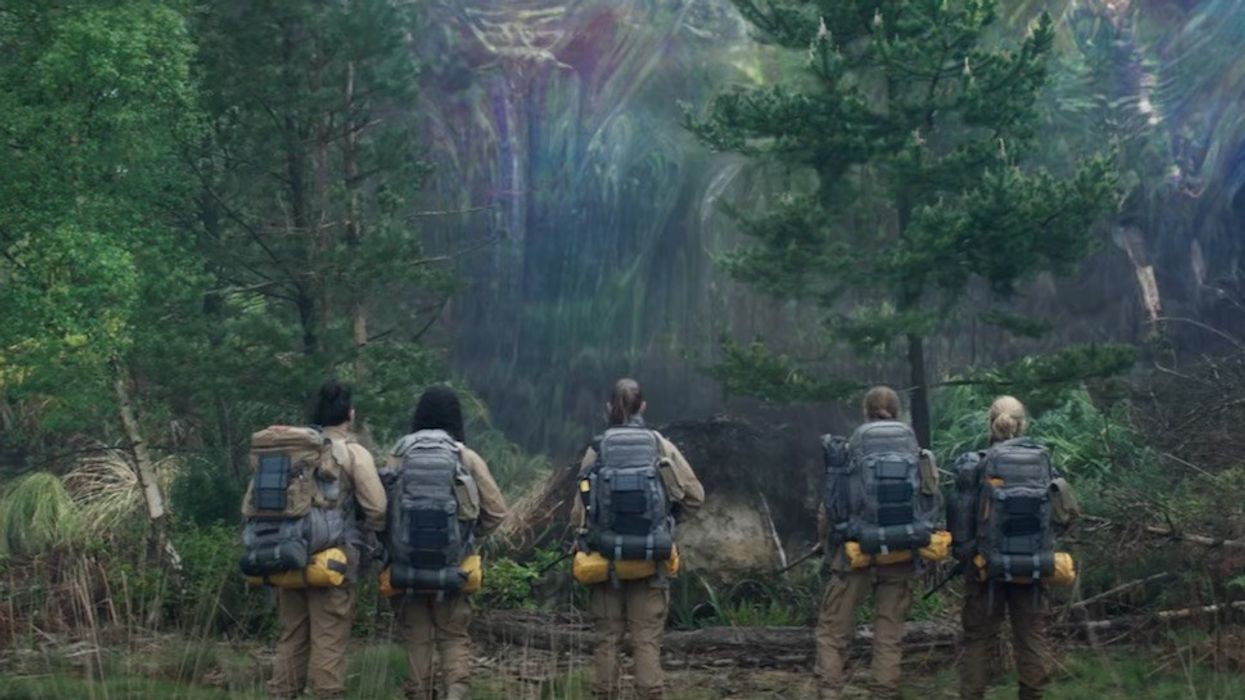Why Sci-Fi is the Ultimate Playground for Large Scale Ideas
Or how 'Annihilation' explores its themes through genre.

Editors note: major spoilers for Annihilation ahead.
From the very beginning, it was clear that Alex Garland wanted his adaptation of the first of Jeff Vandermeer's Southern Reach novels, Annihilation, to feel like something different. Perhaps that's why the writer/ director of Ex Machina and screenwriter of 28 Days Later and Sunshine insisted on writing the entire screenplay from memory and not as a page-to-page adaptation. Like all the great mavericks of science fiction, Garland wasn't interested in limiting the scope of his imagination.
As Lessons from The Screenplay states in his video essay, Annihilation - The Art of Self-Destruction, "Science fiction is perhaps the best genre to openly explore fundamental ideas of existence." And Garland would be hard-pressed to disagree. “When I first started," he explains in a video excerpt featured in the essay, "I always felt like I had to smuggle ideas into the stories and I realized increasingly that in science fiction you have permission for big ideas.”
Essentially, the genre of science fiction allows a screenwriter the perfect form for translating large, often existential concepts, or big ideas into narrative elements. In Annihilation, these concepts are identified by Lessons From The Screenplay as duplication, mutation, and self-destruction. They are explored through a few different screenwriting strategies.
The design of the characters is used to express the theme of self-destruction. Each one of the characters that make up the exploration team embodies an aspect of self-destruction in some form: an addict, a self-harmer, an adulteress, and a cancer patient. “Demonstrating theme through character design is a technique found in all genres, but science fiction is particularly good at expressing abstract ideas through the story world,” LFTS analyzes.
"...in science fiction you have permission for big ideas"
The story world can roughly be thought of as the film’s setting, so right away you can tell how its uses can be expanded in the genre of science fiction. Writers can imagine worlds that exaggerate internal characteristics of their own characters. In Annihilation, the setting of the Shimmer is used to express the theme of mutation.
“Embracing the science fiction genre allows the concept of mutation to become literal in a row of beautiful flowers or a terrifying monster,” LFTS points out.
As for duplication, it’s a theme that is heavily entwined within the structure of the plot itself. The climactic scene of the film employs the theme of duplication to distance itself from a tired sci-fi trope - first contact.
In Garland's own words, “When we deal with aliens, we often make them like us in some way. Maybe they want to eat us, or maybe they want our water, our resources…But these are all sort of human concerns… We are motivated by things and we have agendas, and an alien might not have an agenda, or might not be motivated…And so it was an attempt to create an alien alien.”
Source: Lessons From the Screenplay











